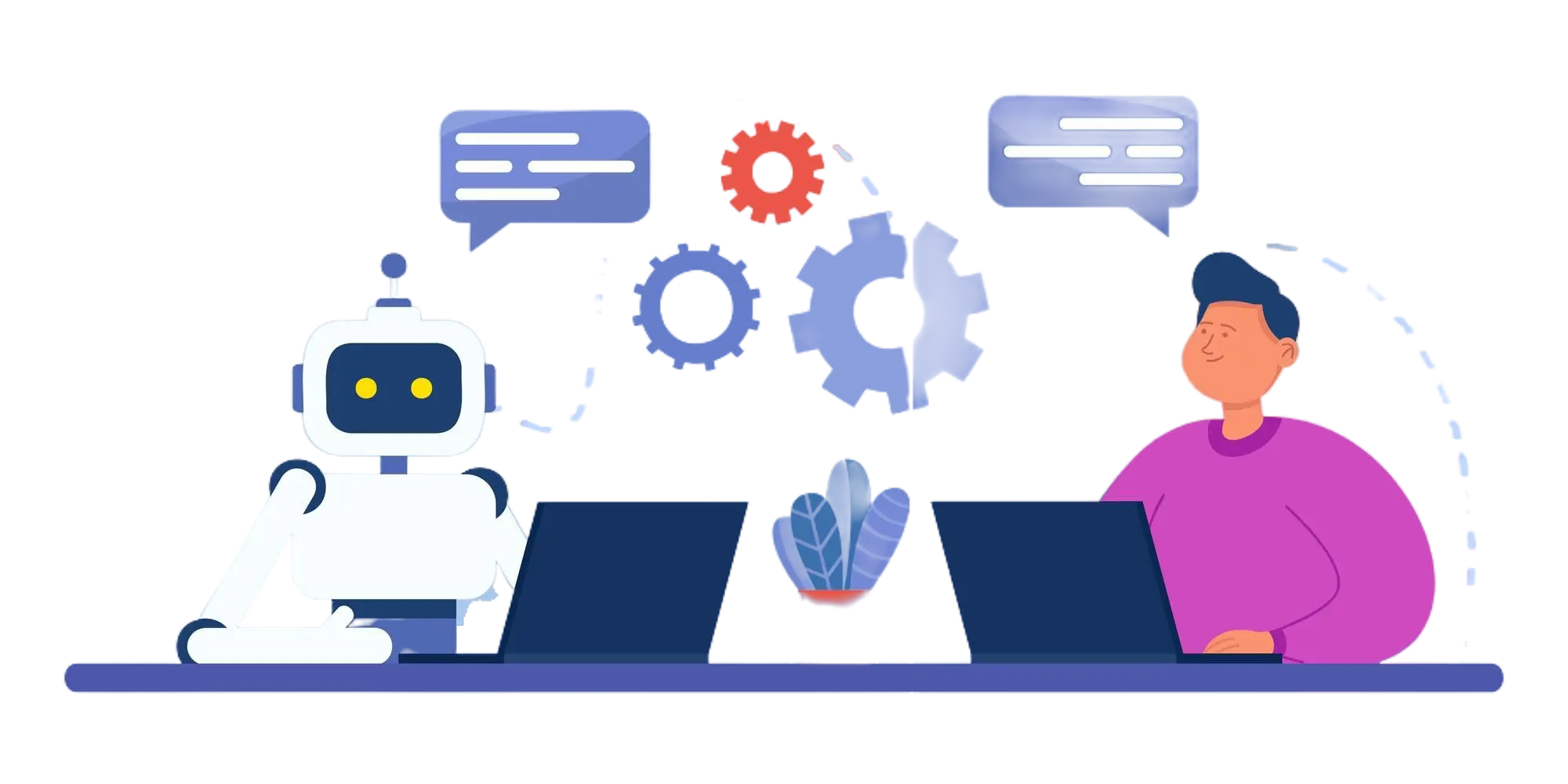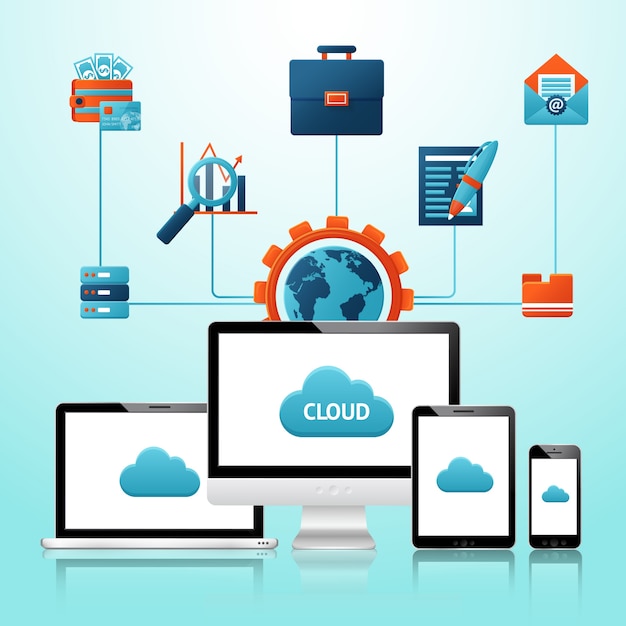AI and Automation in IT Helpdesk Support: Enhancing Efficiency

In the ever-evolving landscape of IT support, the integration of artificial intelligence (AI) and automation has emerged as a transformative force, reshaping the way organizations manage their IT helpdesk functions. This article explores the role of AI and automation in IT helpdesk support, emphasizing how these technologies enhance efficiency, streamline processes, and contribute to a more responsive and proactive support ecosystem.
Understanding the Evolution of IT Helpdesk Support:
The traditional IT helpdesk model has been characterized by manual processes, ticket-based resolutions, and reactive responses to user issues. As organizations grapple with increasing complexities in their IT environments and a growing demand for seamless user experiences, the need for a more advanced and efficient support system has become apparent.
1. Introduction to AI in IT Helpdesk Support:
Artificial Intelligence in IT helpdesk support introduces the capability to analyze vast amounts of data, understand user queries, and provide intelligent responses. AI-powered chatbots and virtual assistants have become integral components of modern IT support, offering real-time assistance to users.
2. Chatbots and Virtual Assistants:
Chatbots equipped with natural language processing capabilities can engage in conversations with users, understand their queries, and provide relevant information or solutions. Virtual assistants enhance user interactions, offering quick and efficient support for routine inquiries and issue resolution.
3. Automated Ticketing Systems:
Automation in ticketing systems streamlines the process of issue logging and resolution. AI-driven systems can categorize and prioritize tickets based on urgency and complexity, ensuring that the most critical issues receive prompt attention. This contributes to faster response times and improved service levels.
4. Predictive Issue Resolution:
AI algorithms can analyze historical data to predict potential issues before they occur. By identifying patterns and anomalies, AI-powered systems can proactively address issues, reducing the likelihood of downtime and minimizing the impact on users.
5. Knowledge Base Enhancement:
AI plays a key role in enhancing knowledge bases used by IT helpdesk support teams. By continuously analyzing and updating information, AI ensures that support personnel have access to the latest solutions and troubleshooting techniques, facilitating quicker problem resolution.
6. User Behavior Analysis:
AI-driven analytics tools can analyze user behavior and preferences, helping IT support teams understand common issues and user expectations. This insight enables the customization of support services, leading to a more user-centric approach.
7. Automation of Repetitive Tasks:
Automation extends beyond user interactions to the automation of repetitive and time-consuming tasks. Routine maintenance activities, software updates, and system checks can be automated, freeing up IT support personnel to focus on more complex and strategic initiatives.
8. Integration with ITSM Platforms:
AI and automation seamlessly integrate with IT Service Management (ITSM) platforms. This integration enhances the overall IT helpdesk ecosystem by providing a centralized hub for managing incidents, problems, changes, and service requests.
9. Natural Language Processing (NLP):
Natural Language Processing enables AI systems to understand and interpret human language. This is particularly valuable in chatbot interactions, allowing users to communicate naturally and receive accurate and context-aware responses.
10. Efficiency in Issue Triage:
AI-driven automation assists in issue triage by quickly categorizing and assigning tickets to the appropriate support personnel or teams. This accelerates the resolution process and ensures that issues are directed to the right experts.
11. Continuous Learning and Improvement:
AI systems, equipped with machine learning capabilities, continuously learn from interactions and data. This iterative learning process allows AI to improve its performance over time, adapting to evolving IT environments and user needs.
12. Enhanced Security Measures:
AI contributes to bolstering security measures within IT helpdesk support. Automated threat detection, anomaly analysis, and real-time monitoring enhance the organization’s ability to identify and respond to potential security breaches.
13. User Empowerment and Self-Service:
AI and automation empower users through self-service capabilities. Users can access knowledge bases, troubleshoot common issues, and perform routine tasks without direct intervention from the IT support team, leading to increased user satisfaction.
14. Cost-Effective Scaling:
The scalability of AI-driven solutions allows organizations to handle increased support demands without a proportional increase in human resources. This cost-effective scaling ensures that IT helpdesk support can adapt to the organization’s growth.
15. Human-AI Collaboration:
The future of IT helpdesk support lies in a harmonious collaboration between humans and AI. While AI handles routine and repetitive tasks, human expertise remains crucial for addressing complex issues, understanding nuanced queries, and providing a personalized touch in user interactions.
Conclusion:
In conclusion, the integration of AI and automation in IT helpdesk support represents a paradigm shift towards a more efficient, responsive, and user-centric support ecosystem. These technologies not only streamline processes and enhance efficiency but also contribute to a proactive and predictive approach to IT support.
The adoption of AI and automation in IT helpdesk support is not about replacing human expertise but augmenting it. By automating routine tasks, predicting issues before they escalate, and providing intelligent responses, AI allows human IT support professionals to focus on strategic initiatives, complex problem-solving, and delivering a superior user experience.
As organizations navigate the digital transformation journey, the role of AI and automation in IT helpdesk support becomes increasingly pivotal. The ability to provide timely and accurate support is a key differentiator in today’s fast-paced business environment, and AI-driven solutions are at the forefront of delivering on this imperative.
The continuous evolution of AI and automation in IT helpdesk support signifies a commitment to staying ahead of technological advancements and meeting the ever-changing needs of users. Ultimately, the efficient integration of AI and automation elevates IT helpdesk support from a reactive service to a proactive enabler of organizational success.
Understanding the Evolution of IT Helpdesk Support:
The traditional IT helpdesk model has been characterized by manual processes, ticket-based resolutions, and reactive responses to user issues. As organizations grapple with increasing complexities in their IT environments and a growing demand for seamless user experiences, the need for a more advanced and efficient support system has become apparent.
1. Introduction to AI in IT Helpdesk Support:
Artificial Intelligence in IT helpdesk support introduces the capability to analyze vast amounts of data, understand user queries, and provide intelligent responses. AI-powered chatbots and virtual assistants have become integral components of modern IT support, offering real-time assistance to users.
2. Chatbots and Virtual Assistants:
Chatbots equipped with natural language processing capabilities can engage in conversations with users, understand their queries, and provide relevant information or solutions. Virtual assistants enhance user interactions, offering quick and efficient support for routine inquiries and issue resolution.
3. Automated Ticketing Systems:
Automation in ticketing systems streamlines the process of issue logging and resolution. AI-driven systems can categorize and prioritize tickets based on urgency and complexity, ensuring that the most critical issues receive prompt attention. This contributes to faster response times and improved service levels.
4. Predictive Issue Resolution:
AI algorithms can analyze historical data to predict potential issues before they occur. By identifying patterns and anomalies, AI-powered systems can proactively address issues, reducing the likelihood of downtime and minimizing the impact on users.
5. Knowledge Base Enhancement:
AI plays a key role in enhancing knowledge bases used by IT helpdesk support teams. By continuously analyzing and updating information, AI ensures that support personnel have access to the latest solutions and troubleshooting techniques, facilitating quicker problem resolution.
6. User Behavior Analysis:
AI-driven analytics tools can analyze user behavior and preferences, helping IT support teams understand common issues and user expectations. This insight enables the customization of support services, leading to a more user-centric approach.
7. Automation of Repetitive Tasks:
Automation extends beyond user interactions to the automation of repetitive and time-consuming tasks. Routine maintenance activities, software updates, and system checks can be automated, freeing up IT support personnel to focus on more complex and strategic initiatives.
8. Integration with ITSM Platforms:
AI and automation seamlessly integrate with IT Service Management (ITSM) platforms. This integration enhances the overall IT helpdesk ecosystem by providing a centralized hub for managing incidents, problems, changes, and service requests.
9. Natural Language Processing (NLP):
Natural Language Processing enables AI systems to understand and interpret human language. This is particularly valuable in chatbot interactions, allowing users to communicate naturally and receive accurate and context-aware responses.
10. Efficiency in Issue Triage:
AI-driven automation assists in issue triage by quickly categorizing and assigning tickets to the appropriate support personnel or teams. This accelerates the resolution process and ensures that issues are directed to the right experts.
11. Continuous Learning and Improvement:
AI systems, equipped with machine learning capabilities, continuously learn from interactions and data. This iterative learning process allows AI to improve its performance over time, adapting to evolving IT environments and user needs.
12. Enhanced Security Measures:
AI contributes to bolstering security measures within IT helpdesk support. Automated threat detection, anomaly analysis, and real-time monitoring enhance the organization’s ability to identify and respond to potential security breaches.
13. User Empowerment and Self-Service:
AI and automation empower users through self-service capabilities. Users can access knowledge bases, troubleshoot common issues, and perform routine tasks without direct intervention from the IT support team, leading to increased user satisfaction.
14. Cost-Effective Scaling:
The scalability of AI-driven solutions allows organizations to handle increased support demands without a proportional increase in human resources. This cost-effective scaling ensures that IT helpdesk support can adapt to the organization’s growth.
15. Human-AI Collaboration:
The future of IT helpdesk support lies in a harmonious collaboration between humans and AI. While AI handles routine and repetitive tasks, human expertise remains crucial for addressing complex issues, understanding nuanced queries, and providing a personalized touch in user interactions.
Conclusion:
In conclusion, the integration of AI and automation in IT helpdesk support represents a paradigm shift towards a more efficient, responsive, and user-centric support ecosystem. These technologies not only streamline processes and enhance efficiency but also contribute to a proactive and predictive approach to IT support.
The adoption of AI and automation in IT helpdesk support is not about replacing human expertise but augmenting it. By automating routine tasks, predicting issues before they escalate, and providing intelligent responses, AI allows human IT support professionals to focus on strategic initiatives, complex problem-solving, and delivering a superior user experience.
As organizations navigate the digital transformation journey, the role of AI and automation in IT helpdesk support becomes increasingly pivotal. The ability to provide timely and accurate support is a key differentiator in today’s fast-paced business environment, and AI-driven solutions are at the forefront of delivering on this imperative.
The continuous evolution of AI and automation in IT helpdesk support signifies a commitment to staying ahead of technological advancements and meeting the ever-changing needs of users. Ultimately, the efficient integration of AI and automation elevates IT helpdesk support from a reactive service to a proactive enabler of organizational success.



